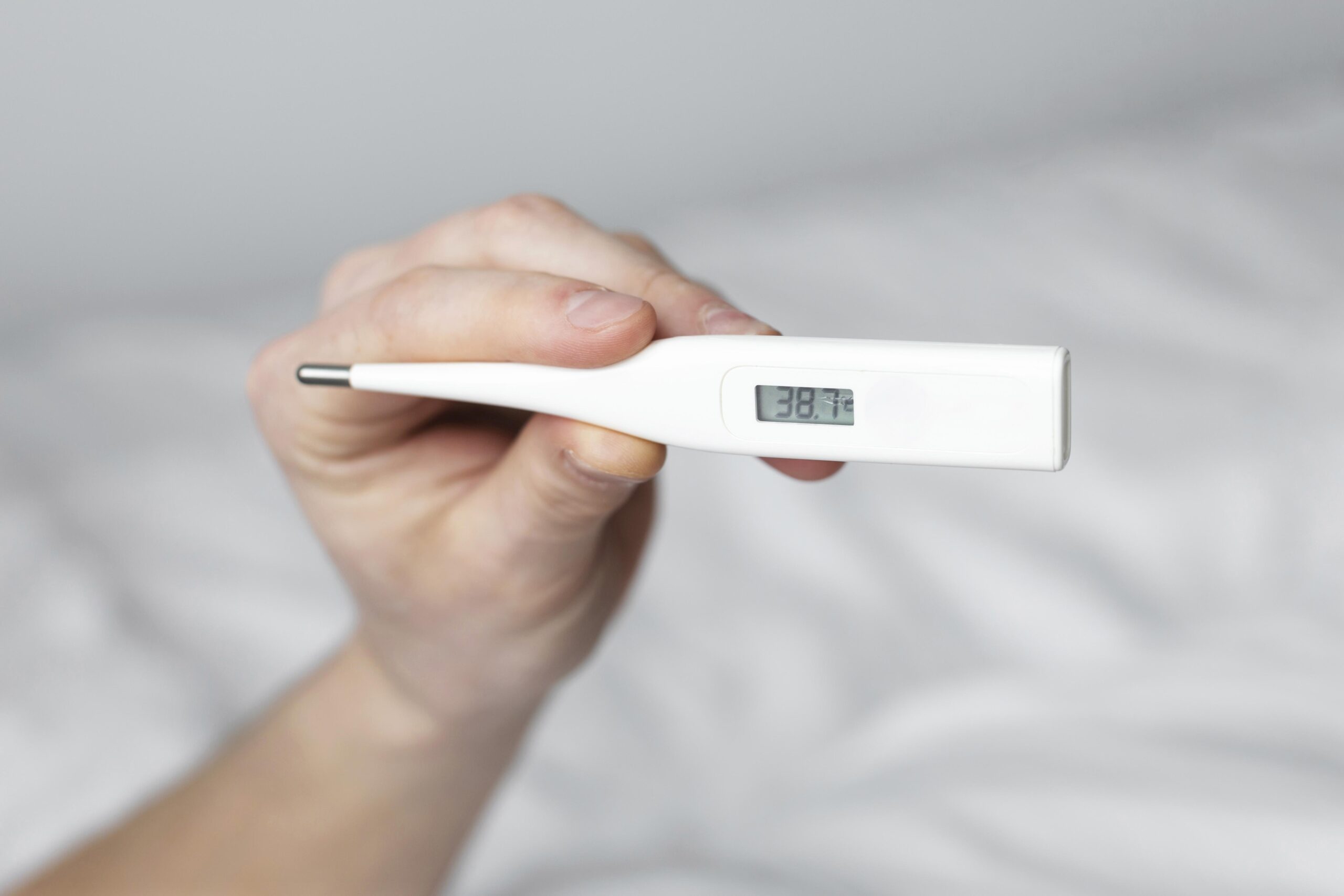Did you know that your body temperature is one of the simplest yet most powerful indicators of your health? Over the years, working with thousands of patients across conditions, we have seen how even a small fluctuation — whether a mild fever, a dip in body warmth, or a sudden spike — can reveal hidden imbalances or healing responses in the body. Yet, most of us don’t pay attention to it beyond checking for fever.
Your temperature is not random; it reflects how well your immune system, metabolism, hormones, and even your nervous system are functioning. In our integrative and lifestyle medicine practice, we study body temperature types closely, because they often hold the first clue to what’s happening inside. Let’s understand what the different ranges mean, and how awareness can help you care for your body with intelligence and balance.
The Body’s Amazing Built-In Temperature Regulation
One of the most fascinating things I’ve learned in over a decade of practice is how intelligently the human body regulates its own temperature. Most of the time, you don’t need to do anything — your system adapts on its own.
When it’s hot, your body activates sweating and expands blood vessels near the skin to release heat. In the cold, it triggers shivering and constricts blood vessels to conserve warmth. During infections, your immune system may deliberately raise temperature, creating an environment where many pathogens cannot survive.
For women, temperature shifts are also linked to menstrual cycles and pregnancy. A slight rise in basal temperature after ovulation is a natural part of fertility, while pregnancy can keep body heat consistently higher.
Stress, exercise, and emotional states also influence temperature. Adrenaline can cause a temporary spike, while deep relaxation helps bring it down.
When Temperature Becomes a Concern
Fluctuations are normal, but pay attention when temperature changes come with unusual symptoms. Red flags include: burning eyes, tongue numbness, dizziness, excessive weakness, confusion, fainting, chest discomfort, or extreme lethargy. These signals suggest the body is struggling and medical evaluation is essential.
Most variations are harmless and adaptive — but anything outside your usual baseline, especially when paired with discomfort, deserves attention.
Here’s a table with the various conditions and how your body regulates its internal temperature:
| Situation | Body’s Response | Purpose |
| Hot weather | Sweating, blood vessels widen | Releases heat and cools the body |
| Cold environment | Shivering, blood vessels narrow | Produces heat, conserves warmth |
| Infection | Fever (raised temperature) | Makes it harder for pathogens to survive |
| Menstrual cycle | Slight rise after ovulation | Normal fertility marker |
| Pregnancy | Consistently higher baseline | Supports fetal development |
| Physical exertion | Heat production increases | Reflects higher metabolic activity |
| Stress or anxiety | Temporary spike in heat | Linked to adrenaline and cortisol release |
All of these mechanisms show how your body is constantly working to protect you.
Understanding these signals doesn’t mean fearing every fluctuation — it means respecting the wisdom built into your biology. When we align lifestyle with this natural intelligence, balance and healing become much easier.

What Is the Range of Temperature in the Human Body?
One of the most common questions I get is what is the range of temperature considered normal for the human body. Typically, it falls between 97°F and 99°F (36.1°C–37.2°C). But remember — ‘normal’ is not identical for everyone.
Your body temperature can shift depending on age, time of day, activity, stress, sleep, and even your unique biology. Children often run warmer, older adults may trend lower, and your temperature naturally dips in the morning and peaks in the evening.
Body Temperature Ranges (Least Concern → Most Concerning):
| Temperature Range | Type | Meaning | Concern Level |
| 97°F–99°F (36.1°C–37.2°C) | Normal | Balanced, healthy function | ✅ Least concern |
| 99.5°F–100.9°F (37.5°C–38.3°C) | Mild Fever | Immune system response, often self-limiting | ⚠️ Mild concern |
| 101°F–103°F (38.3°C–39.4°C) | High Fever | Fighting significant infection; monitor closely | ⚠️ Moderate concern |
| Below 95°F (35°C) | Low Temperature (Hypothermia) | Dangerous if prolonged; impaired function | ❗ High concern |
| Above 104°F (40°C) | Hyperthermia | Medical emergency; risk of organ damage | 🚨 Critical concern |
Your temperature is dynamic, not static. Fluctuations can be part of the body’s natural healing process, but they can also signal when urgent attention is needed.
Now, let’s get to understand these temperature ranges in detail.
Disclaimer: This information is for educational purposes only and not a substitute for medical advice. If your body temperature is dangerously high, unusually low, or accompanied by severe symptoms, seek medical help immediately.
Why Mild Fever Can Be a Good SignA mild fever is often the body’s intelligent way of defending itself. When your temperature rises slightly, it makes it harder for viruses and bacteria to multiply, while activating your immune system to work more efficiently. Instead of reaching for medication right away, give your body space to fight. Rest, hydrate well, and support yourself with light, nourishing foods. Of course, if the fever persists, spikes, or comes with severe symptoms, consult your doctor. Think of a mild fever not as a setback, but as your body moving into action to protect you. |
The Different Body Temperature Types You Should Know
Normal Body Temperature
For most of us, a normal body temperature sits between 97°F and 99°F (36.1°C–37.2°C). This is your body’s balanced state, where metabolism, immunity, and circulation are functioning smoothly. It’s a sign that your internal systems are in harmony and working efficiently. Small daily fluctuations are natural and reflect your body’s adaptability.
Low Temperature of Human Body (Hypothermia)
When the low temperature of the human body drops below 95°F (35°C), it’s known as hypothermia. This is not simply ‘feeling cold’ — it’s a dangerous state where vital organs slow down. Hypothermia can be caused by prolonged exposure to cold weather, immersion in cold water, or even severe illness. If not addressed, it may impair the brain, heart, and nervous system
Mild Fever
A mild fever, usually between 99.5°F and 100.9°F (37.5°C–38.3°C), is often your immune system at work. It helps the body fight off infections by creating an environment less favorable for microbes. Rest, hydration, and light foods are usually enough to support recovery. Persistent or rising fever, however, deserves medical evaluation.

High Fever Temperature Range
The high fever temperature range is generally 101°F–103°F (38.3°C–39.4°C). At this point, your body is battling a stronger infection. While fever itself is a protective response, prolonged or repeated high fever can be risky, especially in children, the elderly, or those with chronic conditions. Monitor carefully, rest, and consult a doctor if high fever continues beyond a couple of days or comes with severe symptoms.
Hyperthermia / Very High Temperature
Hyperthermia occurs when temperature exceeds 104°F (40°C). Unlike fever, it isn’t the immune system at work but an uncontrolled rise due to external heat (heatstroke) or certain conditions. It can damage tissues and organs quickly and requires immediate emergency care.
Your Normal May Be DifferentNot everyone runs at the textbook 98.6°F (37°C). Some people naturally have a slightly higher or lower baseline body temperature — and that can still be perfectly healthy. Factors like age, genetics, hormones, time of day, and even your unique metabolism all influence what’s normal for you. That’s why I always remind clients: don’t compare your readings with someone else’s. Instead, know your personal baseline and notice changes or unusual fluctuations. Awareness of your own “normal” is often the first clue to hidden imbalances.
|

Natural & Lifestyle Tips to Support Healthy Body Temperature
Your body has an incredible ability to regulate its temperature when supported with the right lifestyle practices. Here are simple yet powerful ways to help:
- Stay Hydrated: Water helps the body cool efficiently; warm fluids support circulation in cold weather.
- Food Choices: Use cooling foods like cucumber, watermelon, or coconut water in the heat; warming foods like soups, ginger, and spices in the cold.
- Prioritize Sleep: Adequate sleep regulates circadian rhythm, which controls body temperature naturally.
- Manage Stress: Breathwork, meditation, and journaling prevent stress-driven spikes or chills.
- Dress Wisely: Choose breathable fabrics in summer and layered clothing in winter to assist regulation.
- Gentle Movement: Light exercise promotes circulation, supporting stable internal temperature.
- For Women: Track cycles and hormonal changes — hot flashes or night sweats often reflect shifts in estrogen and progesterone.
- Track Your Health: Notice how stress, immunity, and energy levels affect your baseline. Keeping a journal helps you see patterns before they become problems.
Supporting your body’s natural thermostat is about consistency, not extremes. Small, mindful changes add up to balance.
When Should You Seek Medical Help?
While mild changes in temperature are common, there are times when urgent care is essential. Seek immediate medical help if:
- Your temperature falls below 95°F (35°C) — risk of hypothermia.
- Fever rises above 104°F (40°C) — risk of organ damage.
- High fever lasts more than 2–3 days or worsens despite rest.
- You experience confusion, seizures, chest pain, or difficulty breathing with fever.
- Children, elderly, or immunocompromised individuals show extreme temperature shifts.
Lifestyle measures are supportive, but red-flag signs require professional medical attention without delay.
Key Takeaway: Listen to Your Body’s Signals
Your body temperature is more than just a number — it’s a window into how your system is functioning. From the low dips of hypothermia to the high spikes of fever, each range tells a story. Most of the time, your body regulates temperature beautifully on its own. But awareness matters. When fluctuations feel unusual or are paired with troubling symptoms, it’s time to act.
If you experience recurrent temperature imbalances, fatigue, or unexplained infections, consider working with an integrative team. They can help you understand your body better and create a lifestyle plan that restores balance, strength, and resilience.
If you’re ready to approach health with clarity, not fear, book a consultation with our Integrative and Lifestyle Medicine Experts.
📩 Write to us at consults@lukecoutinho.com
📞 Or call our toll-free number 18001020253
Our integrative team will work with you to create a realistic, personalised plan that fits your life — and respects your body.
Because real health is your responsibility, and your right.
We help you find a way.
Disclaimer
Please make an informed decision before trying anything new. The information shared here is for educational purposes only and not a replacement for medical advice, diagnosis, or treatment. Always consult your healthcare provider, especially if you are experiencing dangerously high or low body temperature, persistent fever, or unusual symptoms alongside temperature changes.

Team Luke
Start Your Wellness Journey
Feeling inspired to take the next step in your wellness journey? Connect with us to explore how our tailored programs can support your health journey. Your transformation is just a conversation away.



